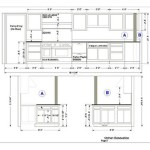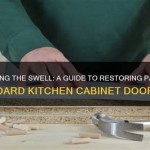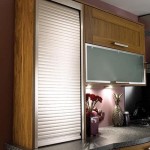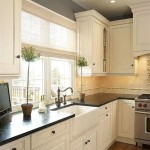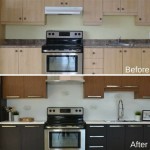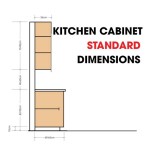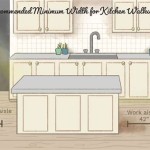Standard Kitchen Cabinet Drawer Widths: A Comprehensive Guide
Kitchen cabinets are a fundamental element of kitchen design, providing essential storage and contributing significantly to the overall functionality and aesthetic appeal of the space. Within the cabinet system, drawers play a crucial role in organizing cookware, utensils, and other kitchen essentials. Understanding the standard drawer widths is essential for both homeowners planning a kitchen renovation and design professionals specifying cabinet dimensions.
Standardization in kitchen cabinet dimensions simplifies the design process, allows for efficient manufacturing, and ensures compatibility between different cabinet components. While customization is always an option, adhering to standard widths can save time and money. This article provides a comprehensive overview of standard kitchen cabinet drawer widths, exploring the common dimensions, factors influencing drawer size, and considerations for optimizing drawer space.
Common Standard Drawer Widths
The kitchen cabinet industry generally adheres to a range of standard drawer widths, measured from the exterior of the cabinet box. These widths are designed to accommodate common kitchen items and fit within standard cabinet configurations. While slight variations may exist between manufacturers, the following widths are generally considered standard:
9-inch Drawers: These narrow drawers are typically used for storing small items such as spice jars, utensils, or cleaning supplies. They are often found in base cabinets located beside stoves or dishwashers, utilizing otherwise wasted space.
12-inch Drawers: A slightly wider option, 12-inch drawers can accommodate larger utensils, cookware lids, or smaller containers. They are often used in upper cabinets for storing plates or bowls.
15-inch Drawers: Fifteen-inch drawers offer a good balance between space and usability. They are suitable for storing various kitchen items, including pots, pans, and larger serving dishes. This size is often incorporated into base cabinets for general storage.
18-inch Drawers: Drawers measuring 18 inches in width are a common standard for general kitchen storage. They provide ample space for a wide range of items, including pots, pans, food storage containers, and larger utensils. This size is frequently used in both base and upper cabinets.
21-inch Drawers: Twenty-one-inch drawers offer increased storage capacity, suitable for larger cookware sets, platters, and other bulky items. They are often specified for base cabinets designed for heavy-duty storage.
24-inch Drawers: A popular standard width, 24-inch drawers are versatile and can accommodate a wide variety of kitchen essentials. They provide ample space for pots, pans, baking sheets, and even small appliances. This size is commonly used in base cabinets and island cabinets.
30-inch Drawers: Thirty-inch drawers offer substantial storage capacity, ideal for larger kitchens and those requiring significant storage space. They can accommodate large cookware sets, serving dishes, and other bulky items. These drawers are often found in base cabinets and island cabinets.
36-inch Drawers: The widest standard drawer size, 36-inch drawers provide maximum storage capacity. They are suitable for storing oversized cookware, platters, and other large items. These drawers are typically used in base cabinets and island cabinets and may require reinforced drawer boxes and hardware due to the increased weight they can hold.
Factors Influencing Drawer Size Selection
Selecting the appropriate drawer widths for a kitchen design involves considering several factors, including the overall kitchen layout, the types of items to be stored, and the desired aesthetic. Careful planning ensures that the drawers are both functional and visually appealing.
Kitchen Layout and Cabinet Configuration: The existing kitchen layout and the planned cabinet configuration are primary determinants of drawer size. The available space, the placement of appliances, and the overall design aesthetic will influence the selection of drawer widths. In smaller kitchens, maximizing storage space may require utilizing a variety of drawer sizes, including narrower options. Larger kitchens may benefit from wider drawers to accommodate larger items and reduce clutter.
Storage Needs and Item Dimensions: The types of items to be stored in the drawers are a critical consideration. Assessing the dimensions of commonly used cookware, utensils, and other kitchen essentials will help determine the appropriate drawer widths. For example, if the kitchen contains a significant number of large pots and pans, wider drawers will be necessary. If the primary storage need is for smaller items such as spice jars or utensils, narrower drawers may be sufficient.
Desired Aesthetic and Design Style: The desired aesthetic and design style of the kitchen can also influence drawer size selection. Some design styles, such as minimalist or contemporary, may favor a more uniform appearance with consistent drawer widths. Other styles, such as traditional or farmhouse, may incorporate a mix of drawer sizes to create a more eclectic or functional look. The selection of cabinet hardware can also influence the perceived size and aesthetic of the drawers.
Budget Considerations: While adhering to standard drawer widths generally helps to control costs, customization can significantly increase the overall budget. More exotic wood species, intricate drawer front designs, and high-end drawer slides will contribute to a higher price point. Homeowners should carefully weigh the benefits of customization against the associated costs and explore alternative options that achieve the desired look and functionality while staying within budget.
Drawer Functionality and Ergonomics: The height and depth of the drawers must also be considered in relation to the width. Shallow drawers are suitable for storing flat items such as utensils or baking sheets, while deeper drawers can accommodate larger items such as pots and pans. Ergonomics should also be considered, ensuring that drawers are easily accessible and that items can be retrieved without straining or bending excessively. Full-extension drawer slides are often recommended for deeper drawers to provide complete access to the contents.
Optimizing Drawer Space and Functionality
Beyond selecting the appropriate drawer widths, optimizing the interior space and functionality of the drawers is essential for creating an efficient and organized kitchen. Utilizing drawer dividers, organizers, and other accessories can maximize storage capacity and improve accessibility.
Drawer Dividers and Organizers: Drawer dividers and organizers are essential for keeping drawers neat and organized. These accessories can be used to separate different types of items, prevent items from shifting during use, and maximize the available space. Common types of drawer dividers include adjustable dividers, fixed dividers, knife blocks, and spice racks. Organizers can also be used to store food storage containers, lids, and other small items.
Custom Drawer Inserts: Custom drawer inserts can be designed to fit specific items or needs. These inserts can be made from wood, plastic, or metal and can be tailored to accommodate specific cookware sets, utensils, or other kitchen essentials. Custom inserts provide a secure and organized storage solution, preventing items from sliding around and maximizing the available space. Many cabinet manufacturers offer custom drawer insert options or can provide recommendations for third-party suppliers.
Full-Extension Drawer Slides: Full-extension drawer slides allow the drawer to be fully extended, providing complete access to the contents. This is particularly useful for deeper drawers, where it can be difficult to reach items in the back. Full-extension slides are typically made from metal and are available in a variety of weight capacities. Soft-close mechanisms are also a popular option, preventing the drawer from slamming shut and reducing noise.
Vertical Dividers for Baking Sheets and Platters: Vertical dividers are ideal for storing baking sheets, platters, and other flat items. These dividers prevent items from stacking on top of each other, making it easier to retrieve the desired item without having to lift multiple items. Vertical dividers can be installed in base cabinets or pantry cabinets and can be adjusted to accommodate different sizes of items.
Pull-Out Shelves and Trays: Pull-out shelves and trays can be installed in base cabinets to provide easy access to items stored in the back. These shelves and trays slide out, allowing homeowners to easily view and retrieve items without having to bend or reach deeply into the cabinet. Pull-out shelves are particularly useful for storing heavy items such as pots and pans.
Specialty Drawer Inserts for Specific Items: Numerous specialty drawer inserts are available for storing specific items, such as knives, spices, and utensils. These inserts are designed to keep items organized and prevent them from shifting during use. Knife blocks provide a safe and organized storage solution for knives, while spice racks keep spice jars neatly arranged and easily accessible. Utensil organizers separate different types of utensils, making it easier to find the desired item.
By carefully considering the standard drawer widths, the factors influencing drawer size selection, and the options for optimizing drawer space, homeowners and design professionals can create a kitchen that is both functional and aesthetically pleasing. A well-designed kitchen with appropriately sized and organized drawers will enhance the cooking experience and improve the overall efficiency of the space.

Kitchen Cabinet Drawer Dimensions Standard Inspiration Ideas 3 Decorating Cabinets Height Measurements

2024 Kitchen Cabinet Drawer Dimensions Counter Top Ideas Check More At Http Ww Sizes Standard Drawers

Cabinet Face Dimensions Kitchen Cabinets Height

Image Result For Kitchen Drawer Size Drawers Cabinet Dimensions

Proper Depth For Frameless Cabinets Kitchen Base Cabinet Drawers Drawing
-8107-p.jpg?strip=all)
Country Style Painted 3 Drawer Kitchen Cabinet 500mm

Base Cabinet Size Chart Builders Surplus
-8171-p.jpg?strip=all)
Pine Traditional Style 1 Door Drawer Kitchen Base Unit 600mm Wide

Shaker 3 Drawer Base Cabinets Bdw Bathrooms Kitchens Tiles

Kcd Brooklyn Drawer Base Cabinet
Related Posts

